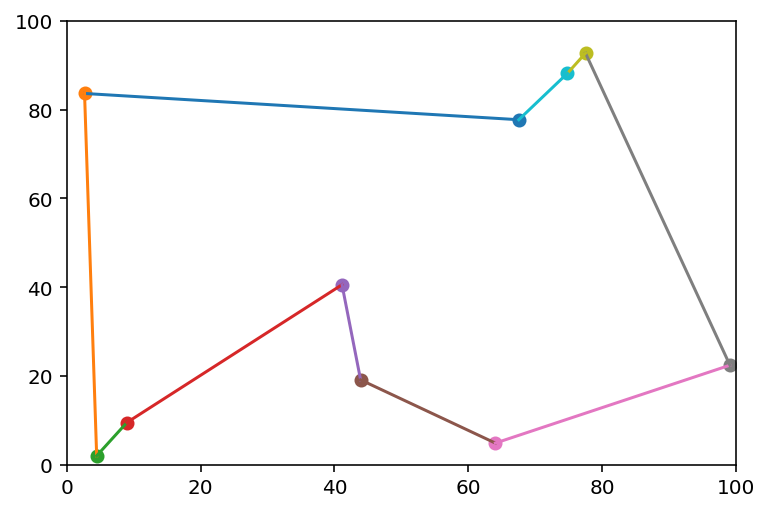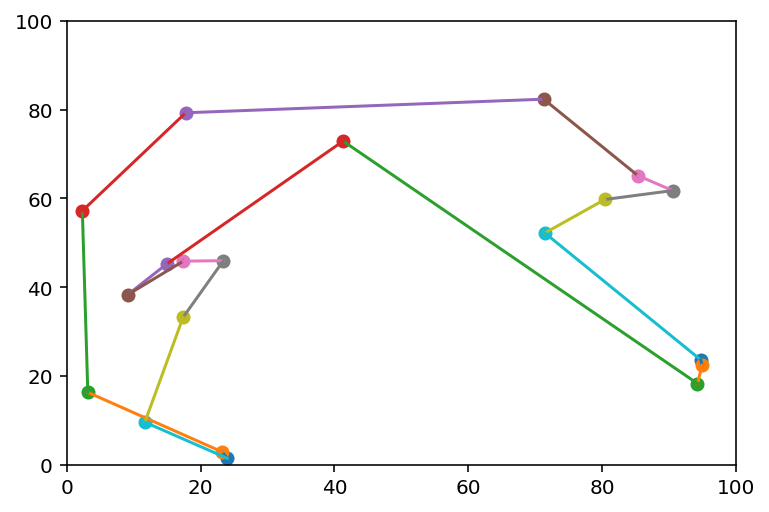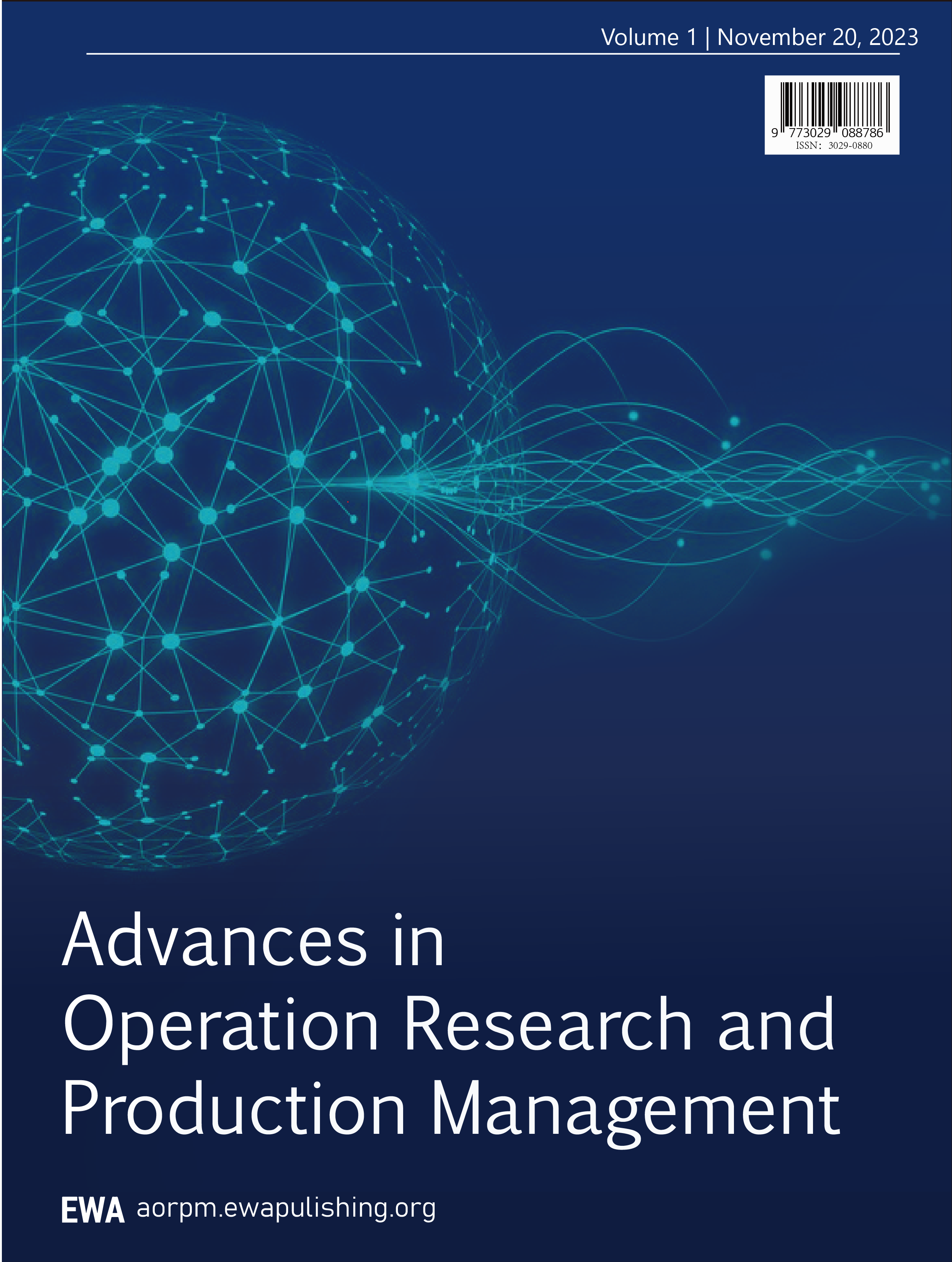1.Introduction
In today's fast-paced world, online shopping has become an indispensable part of life. When individuals order desired products online, the items traverse extensive distances effortlessly to be delivered to their hands. The express delivery industry serves as the pivotal force behind the scenes, bridging merchants and consumers while profoundly influencing daily life amidst its continuous evolution. In recent years, the express delivery sector has witnessed unprecedented growth. China's express delivery business has experienced significant expansion, surpassing 130 billion parcels in 2023 and maintaining its position as the global leader for ten consecutive years, accounting for over 60% of the global parcel market. From January to February 2024, the development index for express deliveries in China rose year-on-year, with a noticeable increase in the development scale index. By April 29, nationwide deliveries had reached 50 billion parcels. The pressure on delivery services is mounting. To alleviate couriers' delivery burdens and reduce costs, optimal transportation routes need to be identified, enabling couriers to save time and conserve energy.
(1) Jiamei Xiong et al. [1] examined the optimization of last-mile delivery solutions in urban logistics. They proposed methods including GPS location planning, unmanned vehicles for community delivery, elevator robots for hand-offs, AI facial recognition payments, and convenient scheduling for pick-up and drop-off. Their findings concluded that AI-supported unmanned delivery models are the most effective in improving efficiency.
(2) Di Wang et al. [2] explored the last-mile courier delivery path problem using the Greedy Whale Optimization Method, concluding that this approach is applicable to delivery path issues.
(3) Zicheng Zhou et al. [3] investigated logistics distribution path optimization, introducing an improved ant colony algorithm based on the Grey Wolf Optimizer. Their results demonstrated the algorithm's effectiveness in optimizing logistics vehicle routes, thereby reducing costs and enhancing efficiency.
(4) Ruinan Sun et al. [4] addressed logistics distribution path challenges, proposing a hybrid heuristic algorithm.
(5) Yuanwan Fu et al. [5] focused on optimizing the last 1000 meters of the logistic endpoint delivery path, proposing a solution based on a genetic algorithm using MATLAB simulations. Ultimately, this approach yielded an overall optimal delivery route, enhancing delivery efficiency to achieve eco-friendly transportation goals.
(6) Siting Jin et al. [6] examined the reliability of courier delivery systems and proposed a Bayesian-GO integrated method.
(7) Peipei Tang et al. [7] analyzed the routing problem for same-city fresh product delivery using a genetic algorithm. Their study demonstrated that combining the genetic algorithm with MATLAB computation produces an optimal vehicle routing path, effectively reducing delivery time.
(8) Xin Huang et al. [8] explored route optimization for postal and courier enterprises. By employing multimodal transport, their findings highlighted improvements in transportation efficiency and reductions in operational costs.
(9) Qinggui Gao et al. [9] investigated cold chain logistics delivery route optimization. They applied an improved Clarke-Wright algorithm, considering delivery schemes with and without time windows. Results showed that both schemes achieved lower overall delivery costs compared to the original route plans.
(10) Kai Wang et al. [10] studied the design of a hub-based delivery service network for food delivery. Using a genetic algorithm, the research revealed that a hub-based network becomes more effective when orders reach a certain scale, requiring fewer couriers to complete deliveries while demonstrating significant cost advantages.
2.Development status of the logistics industry
Figure 1. Express Delivery Volume from 2014 to 2022
As shown in Figure 1, the express delivery volume in China exceeded 14 billion parcels in 2014 and reached 110.58 billion parcels in 2022—an eightfold increase over eight years. Although the growth rate slowed to 2.1% in 2022, the overall volume continued to grow steadily. Particularly between 2019 and 2021, there was a remarkable surge in business volume.
Figure 2. Courier Personnel from 2014 to 2022
In 2014, China's express delivery industry entered the era of billions of parcels, with over 14 billion processed that year. With swift growth, the number of couriers nationwide rose from 1.2 million in 2014 to nearly 4.5 million in 2022, significantly increasing to meet the industry's needs. Notably, in 2021, the number peaked at 4.9 million.
Figure 3. Annual Parcel Deliveries Per Courier from 2014 to 2022
During these years, express delivery volumes rapidly escalated from the billions to trillions. Although the number of courier personnel has been increasing, in many years, the growth in business volume has surpassed the growth in personnel numbers. This has resulted in a rising workload for each courier, as represented by the increase in annual parcel deliveries per courier. This trend indicates growing pressure on couriers. In 2016, each courier was required to deliver an average of 1,564 parcels.
3.Development of the express delivery industry
(1) Basic Overview of Companies
Companies such as SF Express, JD Logistics, Deppon, ZTO, YTO, STO, Yunda, and J&T are among the major players in the market, boasting a vast workforce of couriers. SF Holding Co., Ltd., for instance, as a major provider of integrated logistics services, employs over ten thousand individuals.
(2) Working Conditions
Couriers typically work long and irregular hours. Work generally begins around 7 or 8 a.m. and can extend to 7 or 8 p.m., or even later. For example, some couriers start sorting parcels at distribution centers as early as 6 a.m. and continue their tasks after a brief midday break, typically 1-2 hours, resuming deliveries until the evening. During peak periods, such as the "Double 11" and "618" e-commerce promotional events, their working hours may extend further, sometimes requiring them to work late into the night to complete daily deliveries.
(3) Information on Wage Costs:
Wage Levels: According to data from Jobui, 76.9% of courier positions offer a monthly salary between 6,000 and 10,000 RMB, with an annual salary ranging from approximately 70,000 to 120,000 RMB. There are considerable differences in courier wages across regions and companies. For instance, in Chengdu, the average monthly wage for couriers is about 9,400 RMB; in major cities like Beijing and Shanghai, wage levels may be higher.
(4) Factors Contributing to Wage Cost Increases:
Policy Factors: With a heightened focus on protecting workers' rights, national policies require companies to provide better benefits and security for employees, which may lead to increased expenses for couriers' wages and social security. Some regions, for example, mandate that companies must contribute to five social insurance and one housing fund for couriers, undoubtedly inflating labor costs for businesses.
Market Competition Factors: Fierce competition in the express delivery sector means companies need to offer higher salaries to attract and retain skilled couriers. Particularly in areas with high business volumes and delivery challenges, companies may willingly raise couriers' salaries to ensure service quality and efficiency.
Business Growth Factors: With the continuous expansion of the e-commerce sector, the volume of express deliveries is steadily increasing, thereby augmenting couriers' workloads.
4.Optimization of last-mile routing
The Traveling Salesman Problem (TSP) involves a set of cities and the distances between each pair. The objective is for the salesman to start from one city, visit all the cities exactly once, and return to the starting city, minimizing the total travel distance.
4.1.Parameter definitions
1. dij: The distance between users i and j.
2. "\( {x_{ij}}: \)": A binary variable indicating whether to travel from user i to user j; =1 indicates a route is taken from i, =0 indicates no route is taken.
3. n: The total number of users.
4.2.Model construction
min\( \sum _{i≠j}dᵢⱼxᵢⱼ \)
s.t.\( \sum _{j=1}^{n}{x_{ij}}=1, i=1,2, \)┅,n,
\( \sum _{i=1}^{n}{x_{ij}}=1, j=1,2, \)┅,n,
\( \sum _{i,j∈s}{x_{ij}} \)≦|s|-1,2≦|s| ≦n-2,s⊂{ 1,2,┅,n},
\( {x_{ij}} \)∈{ 0,1}, i, j = ]┅,n,i≠j.
5.Data collection and model solution, result analysis (Simulated Annealing Algorithm in Python)
Given an initial temperature t=t0, randomly generate an initial state s=s0, set k=0; C(s) represents the travel distance.
Repeat
Repeat
Generate a new state sj = Genete(s);
if min {1,exp[-(C(sj)-C(s))/tk]}>=randrom[0,1] s=sj;
Until the sampling stability criterion is met;
Update the temperature with tk+1 = update(tk and set k = k + 1;
Until the termination criterion of the algorithm is satisfied;
Output the search results of the algorithm.
Each point is made up of two dimensions, x and y, which are integers from 0 to 100, respectively and use simulated annealing algorithm to generate 10 random points between 0 and 100.
initial temperature:90000
The number of iterations at the same temperature:90000
Temperature decay rate:0.1
As shown below:

Figure 4. Optimal route and travel distance for 10 randomly generated points using the Simulated Annealing Algorithm
The coordinates of these 10 points are [75, 88] [68,78] [44,19] [64,5] [ 9, 9] [99, 22] [ 2, 84] [77, 93] [41, 41][ 4, 2].
Optimal route: [1 6 9 4 8 2 3 5 70 0]
Optimal distance: 375
Then we still use simulated annealing algorithm to generate 20 random points between 0 and 100.
initial temperature:50000
The number of iterations at the same temperature:90000
Temperature decay rate:0.1
As shown below:

Figure 5. Optimal route and travel distance for 20 randomly generated points using the Simulated Annealing Algorithm
Optimal route:[15 16 17 10 4 19 1 18 8 6 0 2 14 5 12 11 9 3 13 7]
Optimal distance:350
6.Conclusion
This thesis focuses on solving the last-mile route optimization problem using the simulated annealing (SA) algorithm. In last-mile logistics delivery, route selection is critical as it directly impacts delivery costs and efficiency. Traditional methods often fall short when addressing complex route optimization problems. Therefore, the SA algorithm was introduced, given its unique advantages in solving combinatorial optimization problems. During its application, the objective function was meticulously designed to incorporate key factors such as delivery distance and time. The initial solution and neighborhood structure were rationally determined, enabling the algorithm to efficiently explore the solution space. Through extensive simulation experiments and comparative analysis with real-world cases, it was demonstrated that the SA algorithm significantly optimizes delivery routes. Compared with traditional methods, it significantly reduces the total delivery distance, decreases fuel consumption or electricity usage, and thereby lowers costs. At the same time, delivery efficiency is improved, enabling goods to reach customers faster and enhancing customer satisfaction. This offers logistics companies an effective optimization approach for last-mile delivery route planning, demonstrating substantial practical value.
References
[1]. Xiong, J., Ji, Y., Ding, Y., et al. (2020). Optimization of last-mile delivery solutions in urban logistics. Management Science and Engineering, 9(149).
[2]. Wang, D., & Jin, H. (2020). Optimization of express end delivery path with time window based on GWOA. Computer Applications and Software, 37(6), 263-268.
[3]. Zhou, Z., Liang, J., Liu, X., et al. (2021). Optimization of logistics delivery paths using an improved ant colony algorithm based on the grey wolf optimizer. Computer Science and Application, 11(892).
[4]. Sun, R., Chu, X., Chen, Y., et al. (2024). Research on path optimization of express terminal location based on hybrid heuristic algorithm. Computer Engineering & Science, 46(1), 159.
[5]. Fu, Y., Hui, J., Wang, D., et al. (2019). Study on last 1000-meter logistics endpoint delivery route optimization. Smart City Applications, 2(3).
[6]. Bai, X., & Liu, B. (2019). A research on reliability of express delivery system based on Bayesian-GO method. Industrial Engineering, 22(4), 23-30.
[7]. Tang, P., Feng, X., & Gong, Y. (2018). Study on optimization of fresh urban delivery path based on genetic algorithm. Shanghai Management Science.
[8]. Huang, X., Zeng, X., Li, Y., et al. (2021). Route optimization of multimodal transportation of postal express enterprises considering environmental tax. Transport Research, 7(3), 72.
[9]. Gao, Q., Wei, Z., Zhang, Y., et al. (2023). Optimization of cold chain logistics distribution route for company Y using an improved CW algorithm. Management Science and Engineering, 12(597).
[10]. Wang, K., & Qian, Y. (2024). Research on distributed delivery service network design based on genetic algorithm. Operations Research and Fuzziology, 14(607).
Cite this article
Sheng,W. (2025). Research on solving the minimum path problem for courier delivery based on an annealing algorithm. Advances in Operation Research and Production Management,4(1),1-6.
Data availability
The datasets used and/or analyzed during the current study will be available from the authors upon reasonable request.
Disclaimer/Publisher's Note
The statements, opinions and data contained in all publications are solely those of the individual author(s) and contributor(s) and not of EWA Publishing and/or the editor(s). EWA Publishing and/or the editor(s) disclaim responsibility for any injury to people or property resulting from any ideas, methods, instructions or products referred to in the content.
About volume
Journal:Advances in Operation Research and Production Management
© 2024 by the author(s). Licensee EWA Publishing, Oxford, UK. This article is an open access article distributed under the terms and
conditions of the Creative Commons Attribution (CC BY) license. Authors who
publish this series agree to the following terms:
1. Authors retain copyright and grant the series right of first publication with the work simultaneously licensed under a Creative Commons
Attribution License that allows others to share the work with an acknowledgment of the work's authorship and initial publication in this
series.
2. Authors are able to enter into separate, additional contractual arrangements for the non-exclusive distribution of the series's published
version of the work (e.g., post it to an institutional repository or publish it in a book), with an acknowledgment of its initial
publication in this series.
3. Authors are permitted and encouraged to post their work online (e.g., in institutional repositories or on their website) prior to and
during the submission process, as it can lead to productive exchanges, as well as earlier and greater citation of published work (See
Open access policy for details).
References
[1]. Xiong, J., Ji, Y., Ding, Y., et al. (2020). Optimization of last-mile delivery solutions in urban logistics. Management Science and Engineering, 9(149).
[2]. Wang, D., & Jin, H. (2020). Optimization of express end delivery path with time window based on GWOA. Computer Applications and Software, 37(6), 263-268.
[3]. Zhou, Z., Liang, J., Liu, X., et al. (2021). Optimization of logistics delivery paths using an improved ant colony algorithm based on the grey wolf optimizer. Computer Science and Application, 11(892).
[4]. Sun, R., Chu, X., Chen, Y., et al. (2024). Research on path optimization of express terminal location based on hybrid heuristic algorithm. Computer Engineering & Science, 46(1), 159.
[5]. Fu, Y., Hui, J., Wang, D., et al. (2019). Study on last 1000-meter logistics endpoint delivery route optimization. Smart City Applications, 2(3).
[6]. Bai, X., & Liu, B. (2019). A research on reliability of express delivery system based on Bayesian-GO method. Industrial Engineering, 22(4), 23-30.
[7]. Tang, P., Feng, X., & Gong, Y. (2018). Study on optimization of fresh urban delivery path based on genetic algorithm. Shanghai Management Science.
[8]. Huang, X., Zeng, X., Li, Y., et al. (2021). Route optimization of multimodal transportation of postal express enterprises considering environmental tax. Transport Research, 7(3), 72.
[9]. Gao, Q., Wei, Z., Zhang, Y., et al. (2023). Optimization of cold chain logistics distribution route for company Y using an improved CW algorithm. Management Science and Engineering, 12(597).
[10]. Wang, K., & Qian, Y. (2024). Research on distributed delivery service network design based on genetic algorithm. Operations Research and Fuzziology, 14(607).









